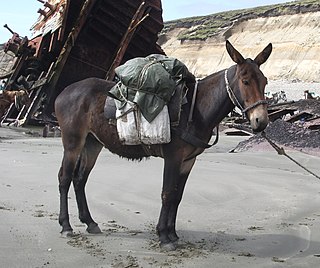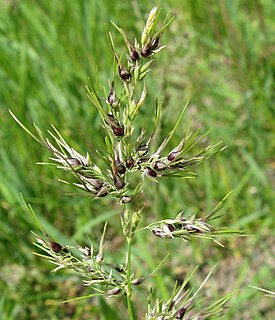This article needs additional citations for verification .(September 2009) (Learn how and when to remove this template message) |
Plant breeders use different methods depending on the mode of reproduction of crops, which include:

Reproduction is the biological process by which new individual organisms – "offspring" – are produced from their "parents". Reproduction is a fundamental feature of all known life; each individual organism exists as the result of reproduction. There are two forms of reproduction: asexual and sexual.
Contents
- Self fertilizing crops (autogamous crops)
- Mass selection
- Selection of cross-pollinated crops
- Mass selection 2
- Recurrent selection
- Half-sib selection with progeny testing
- Full-sib selection with progeny testing
- Breeding of asexually propagated crops
- Improving asexual plant material through selection
- Selection of asexual plants
- New clone development
- See also
- References
- Self-fertilization, where pollen from a plant will fertilise reproductive cells or ovules of the same plant
- Cross-pollination, where pollen from one plant can only fertilize a different plant
- Asexual propagation (e.g. runners from strawberry plants) where the new plant is genetically identical to its parent
- Apomixis (self-cloning), where seeds are produced asexually and the new plant is genetically identical to its parent

Pollen is a fine to coarse powdery substance comprising pollen grains which are male microgametophytes of seed plants, which produce male gametes. Pollen grains have a hard coat made of sporopollenin that protects the gametophytes during the process of their movement from the stamens to the pistil of flowering plants, or from the male cone to the female cone of coniferous plants. If pollen lands on a compatible pistil or female cone, it germinates, producing a pollen tube that transfers the sperm to the ovule containing the female gametophyte. Individual pollen grains are small enough to require magnification to see detail. The study of pollen is called palynology and is highly useful in paleoecology, paleontology, archaeology, and forensics. Pollen in plants is used for transferring haploid male genetic material from the anther of a single flower to the stigma of another in cross-pollination. In a case of self-pollination, this process takes place from the anther of a flower to the stigma of the same flower.

Plant propagation is the process of growing new plants from a variety of sources: seeds, cuttings, and other plant parts. Plant propagation can also refer to the artificial or natural dispersal of plants.

The garden strawberry is a widely grown hybrid species of the genus Fragaria, collectively known as the strawberries, which are cultivated worldwide for their fruit. The fruit is widely appreciated for its characteristic aroma, bright red color, juicy texture, and sweetness. It is consumed in large quantities, either fresh or in such prepared foods as preserves, juice, pies, ice creams, milkshakes, and chocolates. Artificial strawberry flavorings and aromas are also widely used in products such as lip gloss, candy, hand sanitizers, perfume, and many others.
The mode of reproduction of a crop determines its genetic composition, which, in turn, is the deciding factor to develop suitable breeding and selection methods. Knowledge of mode of reproduction is also essential for its artificial manipulation to breed improved types. Only those breeding and selection methods are suitable for a crop which does not interfere with its natural state or ensure the maintenance of such a state. It is due to such reasons that imposition of self-fertilization on cross-pollinating crops leads to drastic reduction in their performance.

Selective breeding is the process by which humans use animal breeding and plant breeding to selectively develop particular phenotypic traits (characteristics) by choosing which typically animal or plant males and females will sexually reproduce and have offspring together. Domesticated animals are known as breeds, normally bred by a professional breeder, while domesticated plants are known as varieties, cultigens, cultivars, or breeds. Two purebred animals of different breeds produce a crossbreed, and crossbred plants are called hybrids. Flowers, vegetables and fruit-trees may be bred by amateurs and commercial or non-commercial professionals: major crops are usually the provenance of the professionals.
For teaching purpose, plant breeding is presented as four categories: Line breeding (autogamous crops), population breeding (allogamous crops), hybrid breeding (mostly allogamous crops, some autogamous crops), clone breeding (vegetatively propagated crops).
"Allogamy" (cross-fertilization) is a term used in the field of biological reproduction describing the fertilization of an ovum from one individual with the spermatozoa of another. By contrast, autogamy is the term used for self-fertilization. In humans, the fertilization event is an instance of allogamy. Self-fertilization occurs in hermaphroditic organisms where the two gametes fused in fertilization come from the same individual. This is common in plants and certain protozoans.

In biology, a hybrid is the offspring resulting from combining the qualities of two organisms of different breeds, varieties, species or genera through sexual reproduction. Hybrids are not always intermediates between their parents, but can show hybrid vigour, sometimes growing larger or taller than either parent. The concept of a hybrid is interpreted differently in animal and plant breeding, where there is interest in the individual parentage. In genetics, attention is focused on the numbers of chromosomes. In taxonomy, a key question is how closely related the parent species are.














